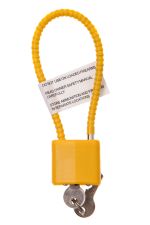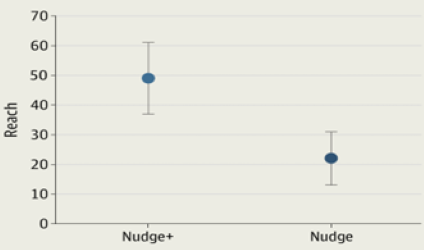• Research Highlights
Firearm injuries and deaths among youth are a major public health concern. While safe storage is a proven safety measure, less than 30% of homes with children report storing firearms locked and unloaded; . In a new study funded by the National Institute of Mental Health, researchers aimed to address this gap by testing the effectiveness of two scalable approaches to promoting safe firearm storage when used during routine well-child visits.
What is the Safe Firearms Storage Program?
Multiple medical societies and the US Office of the Surgeon General endorse clinicians as a critical source of firearms safety guidance. Pediatricians are trusted messengers who regularly discuss safety issues with parents and other caregivers, and both parents and clinicians believe it is appropriate to include firearm storage alongside other safety discussions. Teaching parents how to store firearms safely can help save lives, with studies showing that clinicians who talk to parents about firearm safety improve home storage practices.
With this in mind, a team of researchers and clinicians (in collaboration with health leaders, firearms safety experts, and caregivers) developed a firearms safe storage program called SAFE (Suicide and Accident Prevention through Family Education) Firearm .

Pediatric clinicians deliver the program during well-child visits. It consists of a short conversation with parents about the importance of safe firearm storage and offering them a free cable lock. The program is easy to implement and takes less than a minute during well-child visits. In one previous clinical trial parents who received the original SAFE Firearm program were twice as likely to store firearms safely at home. However, the program has not been widely implemented and this study attempted to make it easier.
What did the researchers do in the study?
The research team, led by Rinad Beidas, Ph.D. at Northwestern University Feinberg School of Medicine, tested two approaches to implementing the SAFE Firearm program in pediatric primary care.
Clinicians saw more than 47,300 children ages 5 to 17 for well-child visits during the study. Visits were conducted in 30 pediatric clinics in two large and diverse health care systems in Michigan and Colorado. Participating clinics were part of it Mental Health Research Network a consortium of research centers located in health care systems dedicated to improving the mental health of patients.
The researchers randomly assigned clinics to use one of two simple support strategies and compared the effectiveness of the strategies in promoting delivery of the firearms program:
- Nudge: Clinicians were reminded to deliver the program via an automatic reminder in patients’ electronic health records.
- Nudge+: Clinicians received the reminder plus 1 year of facilitation to implement the program (examples of facilitation included guidance on talking with parents, assistance with implementation barriers, and feedback on clinic performance).
What did the study find?
Before the study, about 2% of pediatric clinicians reported offering advice on safe storage and cord locks during well-child visits. After using Nudge or Nudge+, the number of clinicians engaging in these behaviors increased significantly.

Although both strategies resulted in an increase in provision of the two components of safe firearm storage, the Nudge+ strategy (reminder and facilitation) proved to be much more effective. Significantly more clinicians who received Nudge+ performed the intervention (49%) compared to those who received only the Nudge reminder (22%).
Not only did the additional support increase program delivery, but it did not require many additional resources or effort. Nudge+ clinics received only 8.7 hours of additional support per clinic each year, which came mostly from email or chat.
What do the results mean?
This is one of the first and largest studies in the United States to focus on implementing universal safe storage of firearms as a routine and regular part of well-child visits. Findings demonstrate the large positive impact of using low-burden and relatively inexpensive support strategies to deliver a safe firearms storage program during pediatric primary care. Combined with results from a previous study funded by NIMH demonstrating high support among clinicians for working with parents on firearms storage safety provides compelling insight into how best to support clinicians and clinics in working with parents on this life-saving topic.
The study had several strengths, including diverse participants, a randomized study design, and an evidence-based approach. However, it also had some limitations. For example, there was no control group that provided care as usual. There are also the limitations of electronic health records: The data do not indicate how long and to what extent clinicians discussed firearm storage with parents, nor is it guaranteed that clinicians always documented these conversations. Additionally, the study only focused on cable locks, and there may be other methods of securing firearms that are more effective or more acceptable to parents.
Next steps for the researchers include analyzing data from surveys conducted with parents throughout the study to determine whether receiving the gun safe storage program improved actual home safety practices. The researchers also plan to test these strategies for delivering the program in other youth-serving settings, such as community centers, after-school programs, and faith-based organizations.
Reference
Beidas, RS, Linn, KA, Boggs, JM, Marcus, SC, Hoskins, K., Jager-Hyman, S., Johnson, C., Maye, M., Quintana, L., Wolk, CB, Wright, L. ., Pappas, C., Beck, A., Bedjeti, K., Buttenheim, AM, Daley, MF, Elias, M., Lyons, J., Martin, ML, … Ahmedani, BK (2024). Implementation of a safe firearm storage program in pediatric primary care: A cluster-randomized trial. JAMA Pediatrics, 178(11), 1104–1113. https://www.doi.org/10.1001/jamapediatrics.2024.3274
